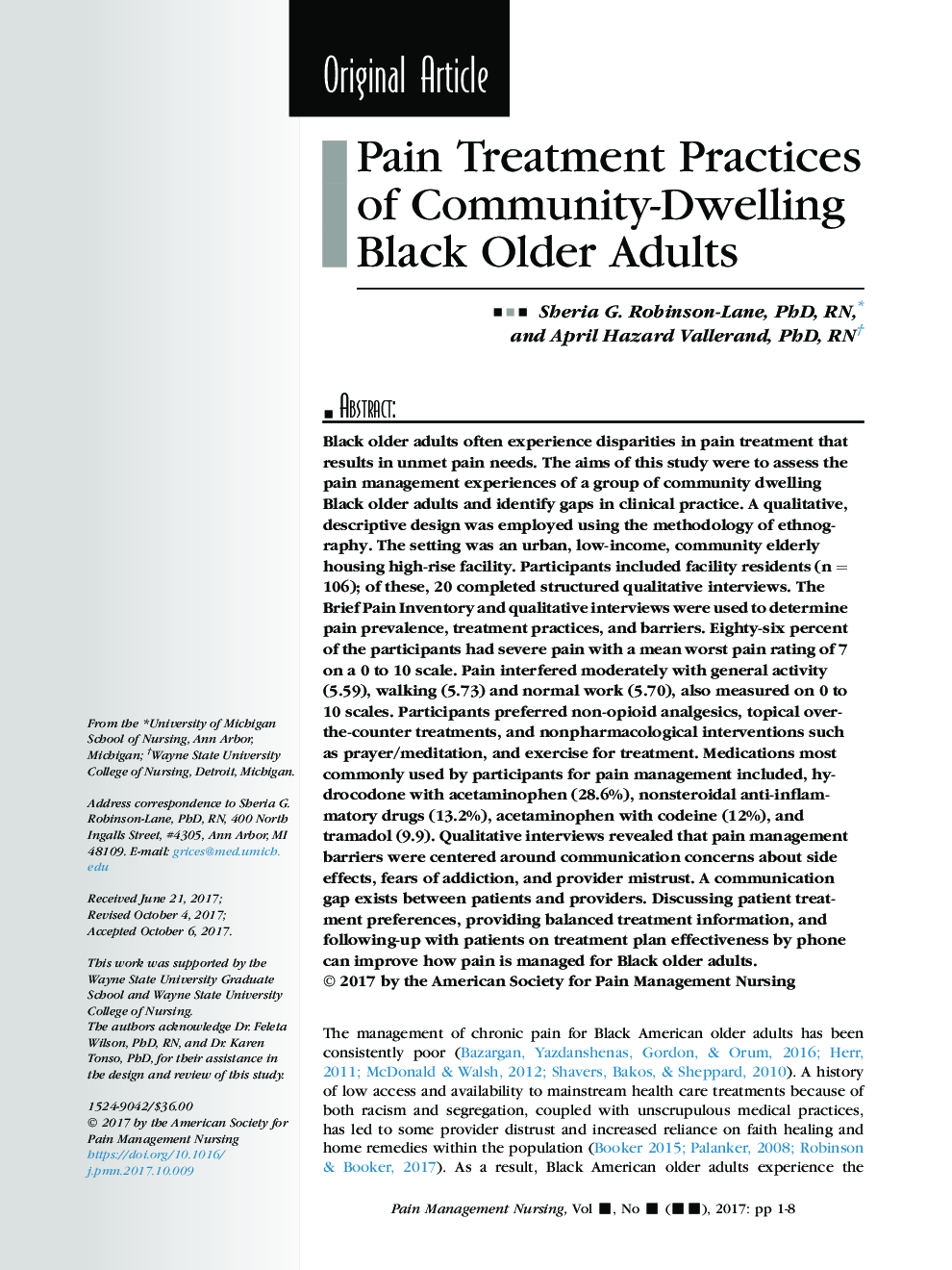| Article ID | Journal | Published Year | Pages | File Type |
|---|---|---|---|---|
| 8578933 | Pain Management Nursing | 2018 | 8 Pages |
Abstract
Black older adults often experience disparities in pain treatment that results in unmet pain needs. The aims of this study were to assess the pain management experiences of a group of community dwelling Black older adults and identify gaps in clinical practice. A qualitative, descriptive design was employed using the methodology of ethnography. The setting was an urban, low-income, community elderly housing high-rise facility. Participants included facility residents (n = 106); of these, 20 completed structured qualitative interviews. The Brief Pain Inventory and qualitative interviews were used to determine pain prevalence, treatment practices, and barriers. Eighty-six percent of the participants had severe pain with a mean worst pain rating of 7 on a 0 to 10 scale. Pain interfered moderately with general activity (5.59), walking (5.73) and normal work (5.70), also measured on 0 to 10 scales. Participants preferred non-opioid analgesics, topical over-the-counter treatments, and nonpharmacological interventions such as prayer/meditation, and exercise for treatment. Medications most commonly used by participants for pain management included, hydrocodone with acetaminophen (28.6%), nonsteroidal anti-inflammatory drugs (13.2%), acetaminophen with codeine (12%), and tramadol (9.9). Qualitative interviews revealed that pain management barriers were centered around communication concerns about side effects, fears of addiction, and provider mistrust. A communication gap exists between patients and providers. Discussing patient treatment preferences, providing balanced treatment information, and following-up with patients on treatment plan effectiveness by phone can improve how pain is managed for Black older adults.
Related Topics
Health Sciences
Medicine and Dentistry
Anesthesiology and Pain Medicine
Authors
Sheria G. PhD, RN, April Hazard PhD, RN,
